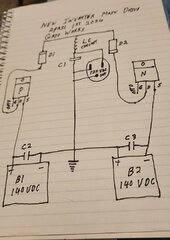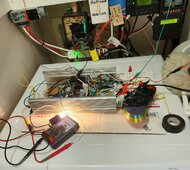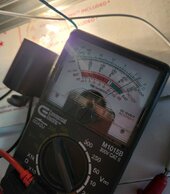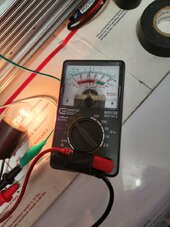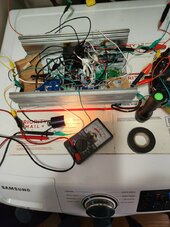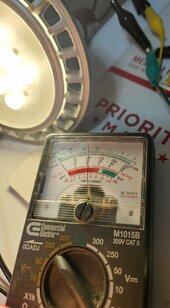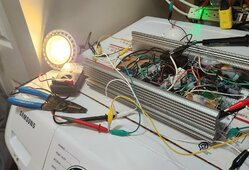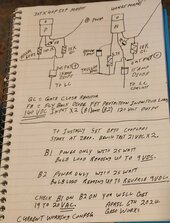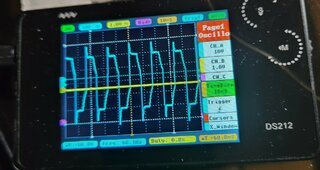Good morning up early, I will post today's updates on this post check back several times. First thing in past testing when the optic drivers were tuned much higher I was getting alot more than 55 watts of energy. It is going to come down to one of three things.
1. Need much lower optic coupler settings and higher voltage from the solar panels B1 & B2, prepared to test this currently at 80VDC and can go up 20VDC at a time to 180VDC.
2. Need a higher optic coupler output settings than previous test but less than full. Prepared to test as well.
3. Not driving the gate FETs correctly, With the correct FETs, driver and DC input voltage with baby step testing I should find the the output these Mosfets are rated for.
Proceeding slowly have discovered a long range of optic coupler settings well below what it takes to glow the bulb in the 21VDC bench testing, may have discovered the voltage control I have been looking for if this is the correct path soon will be uping the voltage from the solar panels.
Have finally found voltage control for the two FET inverter AC output! This will pay off big time in the long term have lowered output voltage from 115VAC to 60VAC, Unfortunately will need to reconnect the panels I disconnected a few days ago to get it back up to 120VAC.
Great news just passed 225 watt load test and the inverter is still running, 115volts AC output 60Hz with solar input 140VDC for B1 & B2, output voltage much more steady. Pushed small Honeywell space heater and LED spot light working smoothly.

Secret is a very low optic coupler setting and higher input solar panel voltage got it right the first time for 120VAC 140VDC input, 220Volt will require more panels, have improved operations by small increase in LED brightness on both channels, hope to nail it all down soon with diagrams and correct parts list.
100K potentiometers on the optic couplers work perfectly once you look for and voltage test the FET output voltage you get perfect control, Works great but needs more fine tuning, was going to double check the flyback diodes on the FETs to see if they were causing any issues but as of right now it is full steam ahead

Taking a break now.




